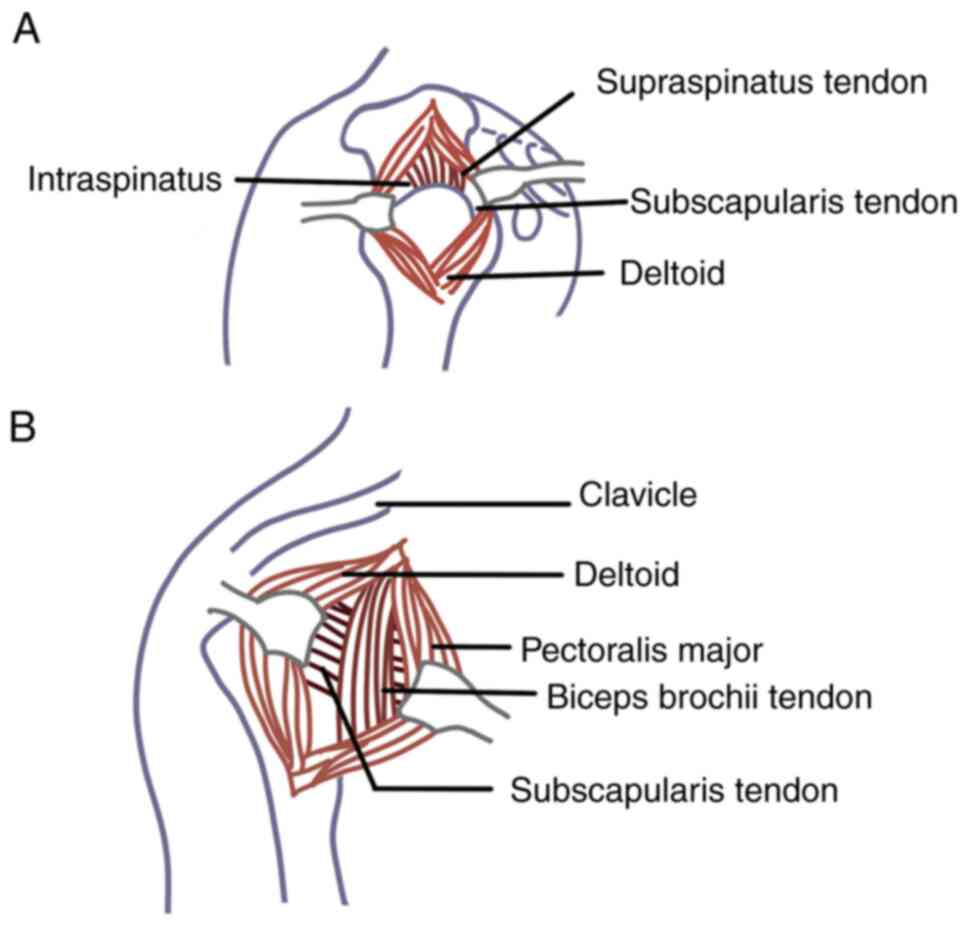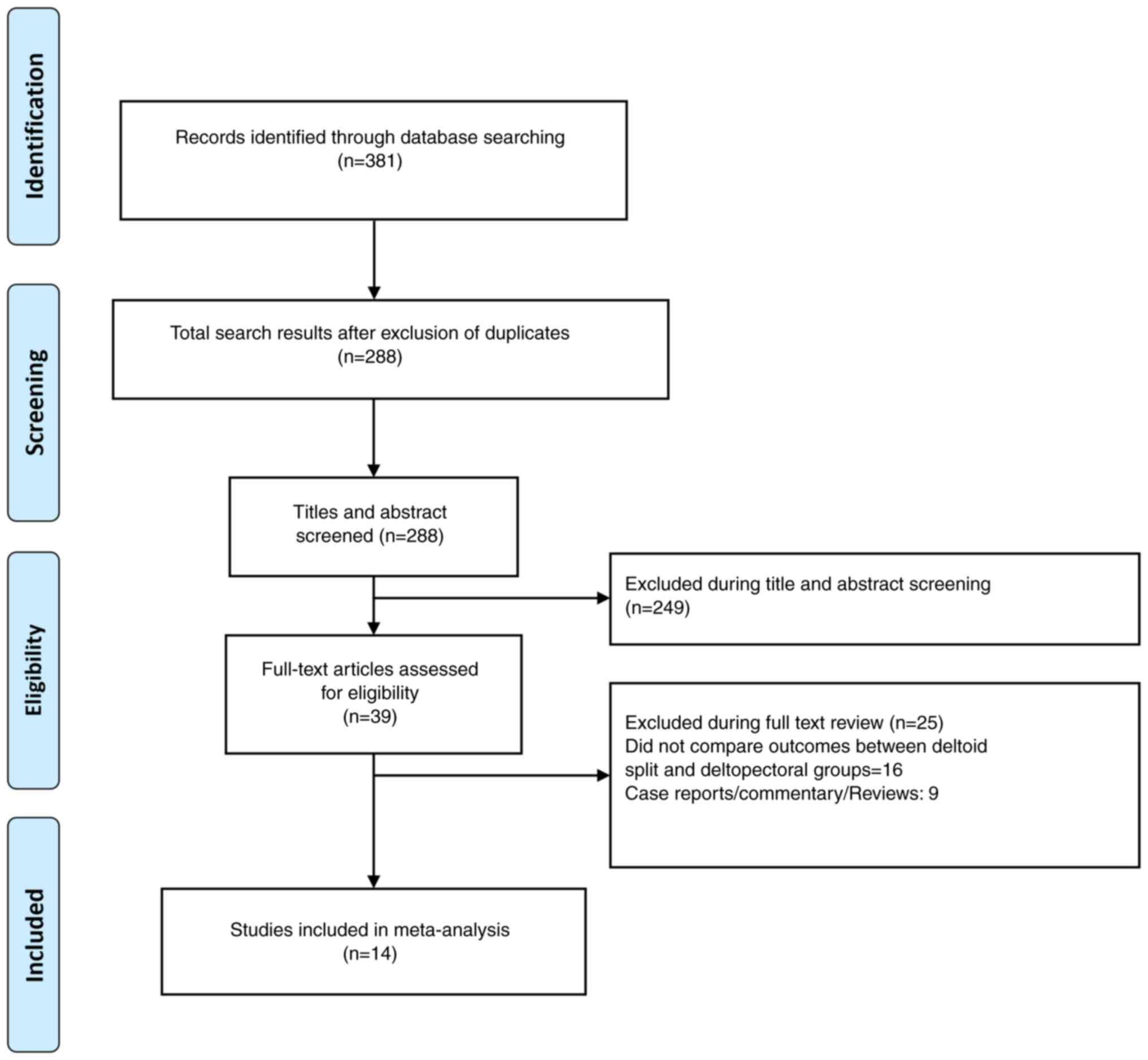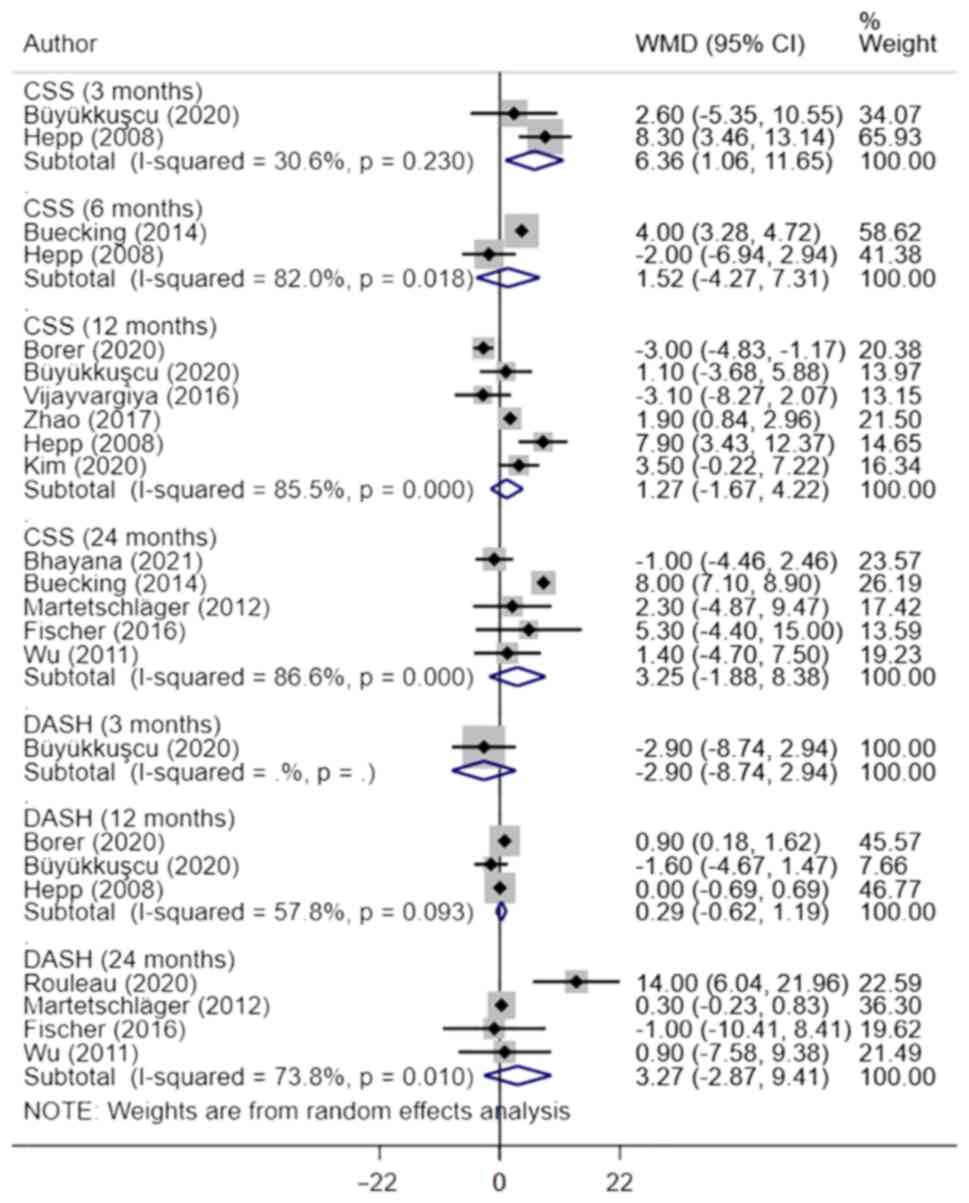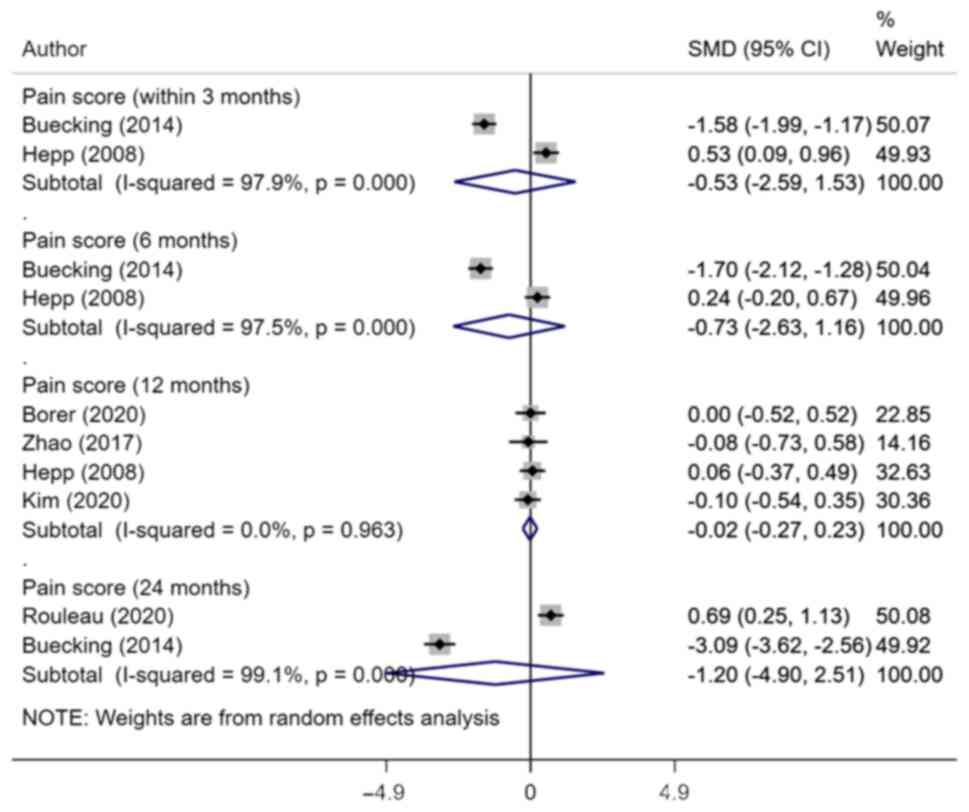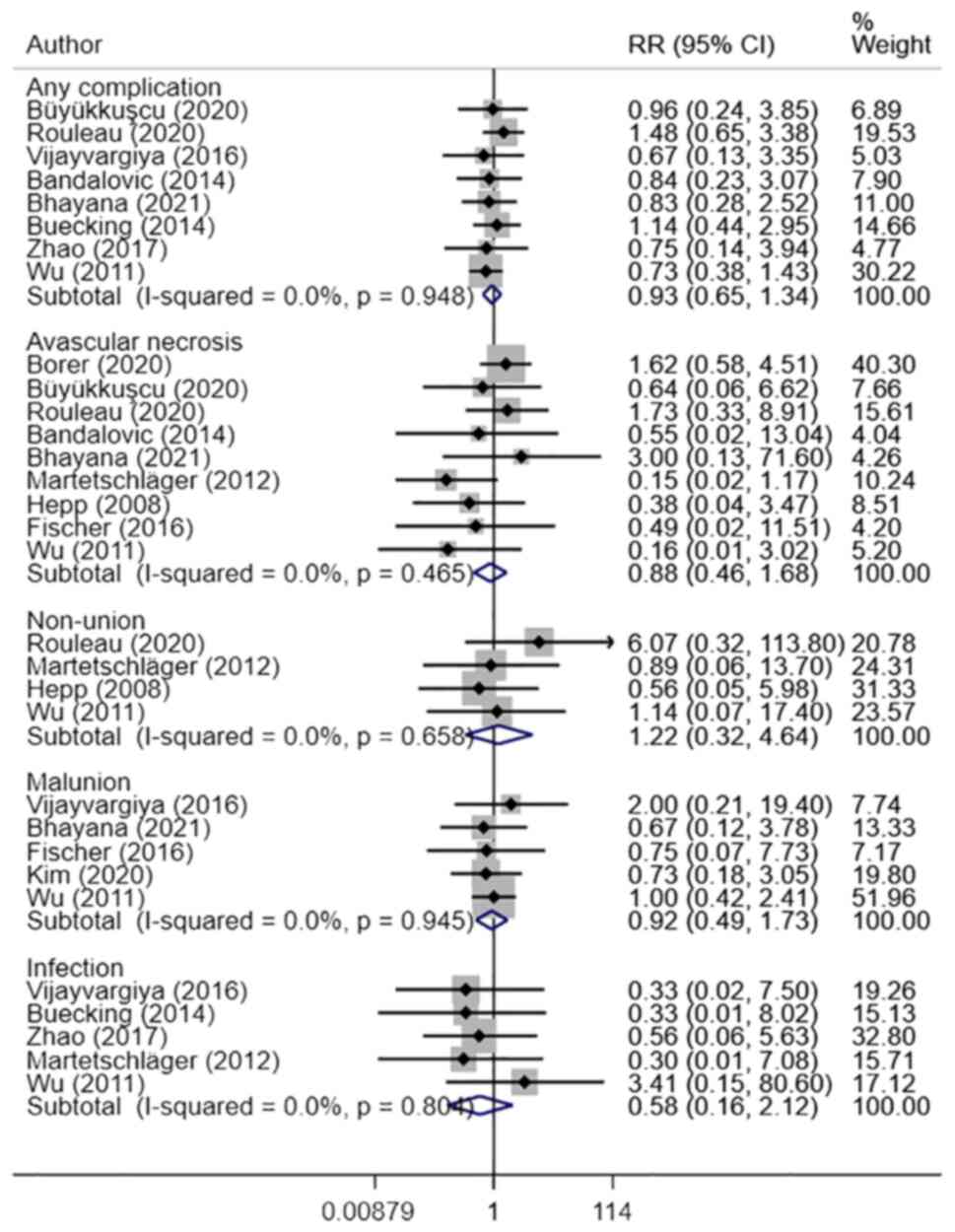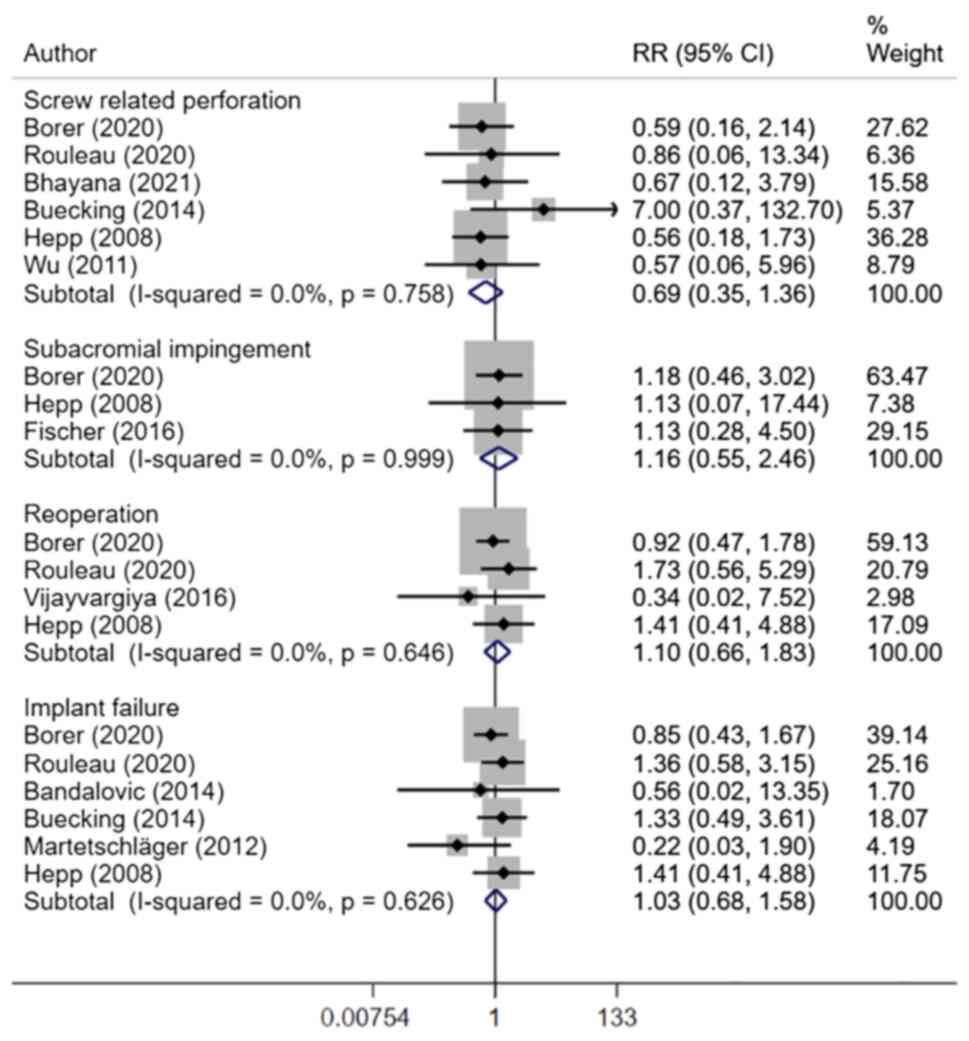|
1
|
Launonen AP, Lepola V, Saranko A,
Flinkkilä T, Laitinen M and Mattila VM: Epidemiology of proximal
humerus fractures. Arch Osteoporos. 10(209)2015.PubMed/NCBI View Article : Google Scholar
|
|
2
|
Bergdahl C, Ekholm C, Wennergren D,
Nilsson F and Möller M: Epidemiology and patho-anatomical pattern
of 2,011 humeral fractures: Data from the Swedish Fracture
Register. BMC Musculoskelet Disord. 17(159)2016.PubMed/NCBI View Article : Google Scholar
|
|
3
|
Passaretti D, Candela V, Sessa P and
Gumina S: Epidemiology of proximal humeral fractures: A detailed
survey of 711 patients in a metropolitan area. J Shoulder Elbow
Surg. 26:2117–2124. 2017.PubMed/NCBI View Article : Google Scholar
|
|
4
|
Khmelnitskaya E, Lamont LE, Taylor SA,
Lorich DG, Dines DM and Dines JS: Evaluation and management of
proximal humerus fractures. Adv Orthop. 2012(861598)2012.PubMed/NCBI View Article : Google Scholar
|
|
5
|
Bahrs C, Stojicevic T, Blumenstock G,
Brorson S, Badke A, Stöckle U, Rolauffs B and Freude T: Trends in
epidemiology and patho-anatomical pattern of proximal humeral
fractures. Int Orthop. 38:1697–1704. 2014.PubMed/NCBI View Article : Google Scholar
|
|
6
|
Lee SH, Dargent-Molina P and Bréart G:
EPIDOS Group. Epidemiologie de l'Osteoporose Study. Risk factors
for fractures of the proximal humerus: Results from the EPIDOS
prospective study. J Bone Miner Res. 17:817–825. 2002.PubMed/NCBI View Article : Google Scholar
|
|
7
|
Iglesias-Rodríguez S, Domínguez-Prado DM,
García-Reza A, Fernández-Fernández D, Pérez-Alfonso E,
García-Piñeiro J and Castro-Menéndez M: Epidemiology of proximal
humerus fractures. J Orthop Surg Res. 16(402)2021.PubMed/NCBI View Article : Google Scholar
|
|
8
|
Maier D, Jäger M, Strohm PC and Südkamp
NP: Treatment of proximal humeral fractures-a review of current
concepts enlightened by basic principles. Acta Chir Orthop
Traumatol Cech. 79:307–316. 2012.PubMed/NCBI
|
|
9
|
Vachtsevanos L, Hayden L, Desai AS and
Dramis A: Management of proximal humerus fractures in adults. World
J Orthop. 5:685–693. 2014.PubMed/NCBI View Article : Google Scholar
|
|
10
|
Schumaier A and Grawe B: Proximal humerus
fractures: Evaluation and management in the elderly patient.
Geriatr Orthop Surg Rehabil. 9(2151458517750516)2018.PubMed/NCBI View Article : Google Scholar
|
|
11
|
Mao F, Zhang DH, Peng XC and Liao Y:
Comparison of surgical versus non-surgical treatment of displaced
3- and 4-part fractures of the proximal humerus: A meta-analysis. J
Invest Surg. 28:215–224. 2015.PubMed/NCBI View Article : Google Scholar
|
|
12
|
Mauro CS: Proximal humeral fractures. Curr
Rev Musculoskelet Med. 4:214–220. 2011.PubMed/NCBI View Article : Google Scholar
|
|
13
|
Berkes MB, Little MT and Lorich DG: Open
reduction internal fixation of proximal humerus fractures. Curr Rev
Musculoskelet Med. 6:47–56. 2013.PubMed/NCBI View Article : Google Scholar
|
|
14
|
Gavaskar AS, Chowdary N and Abraham S:
Complex proximal humerus fractures treated with locked plating
utilizing an extended deltoid split approach with a shoulder strap
incision. J Orthop Trauma. 27:73–76. 2013.PubMed/NCBI View Article : Google Scholar
|
|
15
|
Xie L, Zhang Y, Chen C, Zheng W, Chen H
and Cai L: Deltoid-split approach versus deltopectoral approach for
proximal humerus fractures: A systematic review and meta-analysis.
Orthop Traumatol Surg Res. 105:307–316. 2019.PubMed/NCBI View Article : Google Scholar
|
|
16
|
Moher D, Liberati A, Tetzlaff J and Altman
DG: PRISMA Group. Preferred reporting items for systematic reviews
and meta-analyses: The PRISMA statement. PLoS Med 6. doi:
10.1371/journal.pmed.1000097, 2009.
|
|
17
|
Wells G, Shea B, O'Connell D, Peterson J,
Welch V, Losos M and Tugwell P: The Newcastle-Ottawa Scale (NOS)
for Assessing the Quality of Nonrandomized Studies in
Meta-Analysis. 21.
|
|
18
|
Higgins JP and Green S: Cochrane Handbook
for Systematic Reviews of Interventions. 2nd Edition. John Wiley
& Sons, Chichester (UK), 2019.
|
|
19
|
Egger M, Davey Smith G, Schneider M and
Minder C: Bias in meta-analysis detected by a simple, graphical
test. BMJ. 315:629–634. 1997.PubMed/NCBI View Article : Google Scholar
|
|
20
|
Hepp P, Theopold J, Voigt C, Engel T,
Josten C and Lill H: The surgical approach for locking plate
osteosynthesis of displaced proximal humeral fractures influences
the functional outcome. J Shoulder Elbow Surg. 17:21–28.
2008.PubMed/NCBI View Article : Google Scholar
|
|
21
|
Wu CH, Ma CH, Yeh JJ, Yen CY, Yu SW and Tu
YK: Locked plating for proximal humeral fractures: Differences
between the deltopectoral and deltoid-splitting approaches. J
Trauma. 71:1364–1370. 2011.PubMed/NCBI View Article : Google Scholar
|
|
22
|
Martetschläger F, Siebenlist S, Weier M,
Sandmann G, Ahrens P, Braun K, Elser F, Stöckle U and Freude T:
Plating of proximal humeral fractures. Orthopedics. 35:e1606–e1612.
2012.PubMed/NCBI View Article : Google Scholar
|
|
23
|
Buecking B, Mohr J, Bockmann B, Zettl R
and Ruchholtz S: Deltoid-split or deltopectoral approaches for the
treatment of displaced proximal humeral fractures? Clin Orthop
Relat Res. 472:1576–1585. 2014.PubMed/NCBI View Article : Google Scholar
|
|
24
|
Bandalović A, Cukelj F, Knežević J,
Ostojić M, Pavić A, Parać Z and Rošin M: The results of internal
fixation of proximal humeral osteoporotic fractures with PHILOS
locking plate. Psychiatr Danub. 26 (Suppl 2):S376–S381.
2014.PubMed/NCBI
|
|
25
|
Siripong S and Tangsripong P: Locking
plate fixation of proximal humeral fracture: Minimally invasive vs.
standard delto-pectoral approach. J Med Assoc Thai. 98:196–200.
2015.PubMed/NCBI
|
|
26
|
Fischer C, Frank M, Kunz P, Tanner M,
Weber MA, Moghaddam A, Schmidmaier G and Hug A: Dynamic
contrast-enhanced ultrasound (CEUS) after open and minimally
invasive locked plating of proximal humerus fractures. Injury.
47:1725–1731. 2016.PubMed/NCBI View Article : Google Scholar
|
|
27
|
Vijayvargiya M, Pathak A and Gaur S:
Outcome analysis of locking plate fixation in proximal humerus
fracture. J Clin Diagn Res. 10:RC01–RC05. 2016.PubMed/NCBI View Article : Google Scholar
|
|
28
|
Zhao L, Yang P, Zhu L and Chen AM: Minimal
invasive percutaneous plate osteosynthesis (MIPPO) through
deltoid-pectoralis approach for the treatment of elderly proximal
humeral fractures. BMC Musculoskelet Disord. 18(187)2017.PubMed/NCBI View Article : Google Scholar
|
|
29
|
Büyükkuşcu MÖ, Kulduk A, Mısır A,
Çetinkaya E, Çamurcu İY and Gürsu ŞS: Effect of surgical approaches
on deltoid innervation and clinical outcomes in the treatment of
proximal humeral fractures. Jt Dis Relat Surg. 31:515–522.
2020.PubMed/NCBI View Article : Google Scholar
|
|
30
|
Borer J, Schwarz J, Potthast S, Jakob M,
Lenzlinger P, Zingg U and Babians A: Mid-term results of minimally
invasive deltoid-split versus standard open deltopectoral approach
for PHILOSTM (proximal humeral internal locking system)
osteosynthesis in proximal humeral fractures. Eur J Trauma Emerg
Surg. 46:825–834. 2020.PubMed/NCBI View Article : Google Scholar
|
|
31
|
Kim JY, Lee J and Kim SH: Comparison
between MIPO and the deltopectoral approach with allogenous fibular
bone graft in proximal humeral fractures. Clin Shoulder Elb.
23:136–143. 2020.PubMed/NCBI View Article : Google Scholar
|
|
32
|
Rouleau DM, Balg F, Benoit B, Leduc S,
Malo M, Vézina F and Laflamme GY: Deltopectoral vs. deltoid split
approach for proximal HUmerus fracture fixation with locking plate:
A prospective RAndomized study (HURA). J Shoulder Elbow Surg.
29:2190–2199. 2020.PubMed/NCBI View Article : Google Scholar
|
|
33
|
Bhayana H, Chouhan DK, Aggarwal S, Prakash
M, Patel S, Arora C and Dhillon MS: Outcomes of plate
osteosynthesis for displaced 3-part and 4-part proximal humerus
fractures with deltopectoral vs. deltoid split approach. Eur J
Trauma Emerg Surg. 48:4559–4567. 2022.PubMed/NCBI View Article : Google Scholar
|
|
34
|
Hawkins RJ and Kiefer GN: Internal
fixation techniques for proximal humeral fractures. Clin Orthop
Relat Res. (223):77–85. 1987.PubMed/NCBI
|
|
35
|
Morgan SJ, Furry K, Parekh AA, Agudelo JF
and Smith WR: The deltoid muscle: An anatomic description of the
deltoid insertion to the proximal humerus. J Orthop Trauma.
20:19–21. 2006.PubMed/NCBI View Article : Google Scholar
|
|
36
|
Hintermann B, Trouillier HH and Schäfer D:
Rigid internal fixation of fractures of the proximal humerus in
older patients. J Bone Joint Surg Br. 82:1107–1112. 2000.PubMed/NCBI View Article : Google Scholar
|















